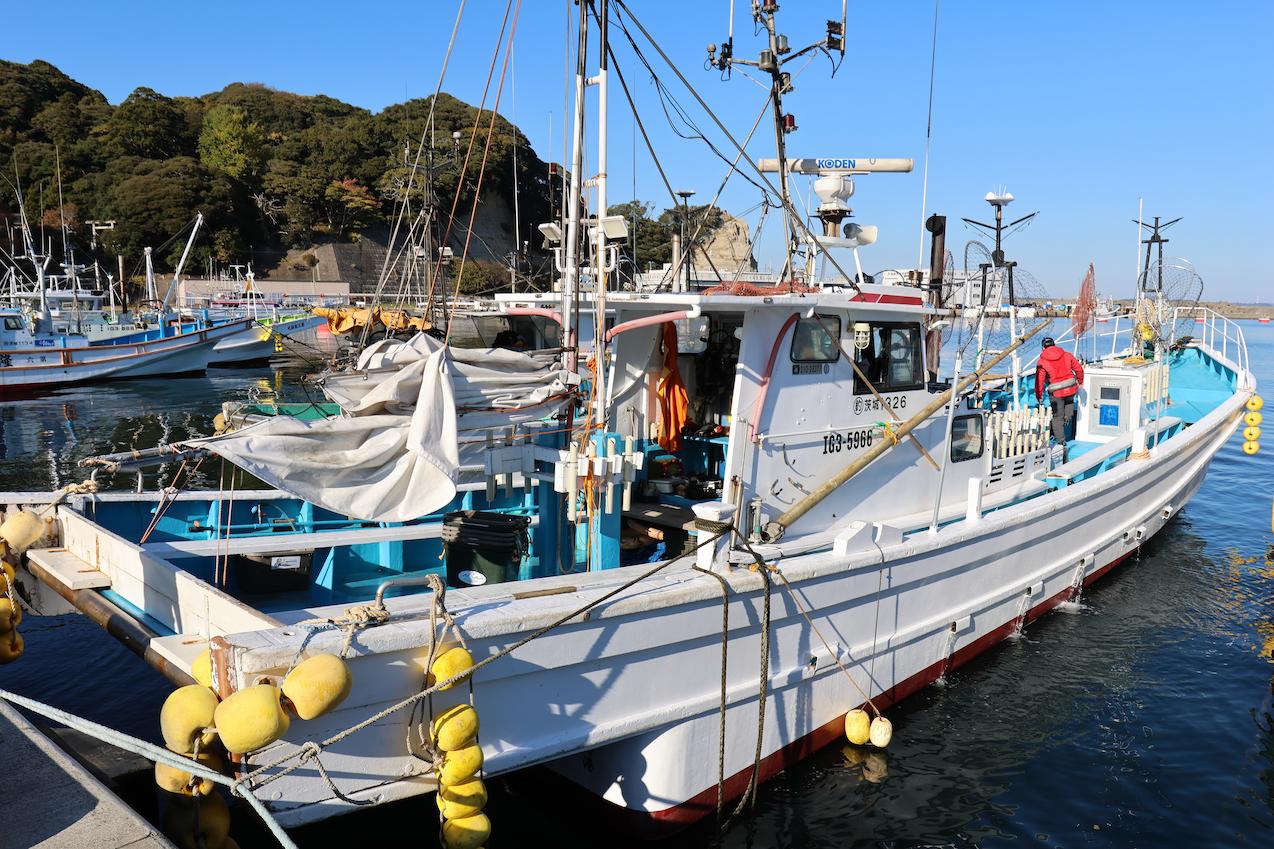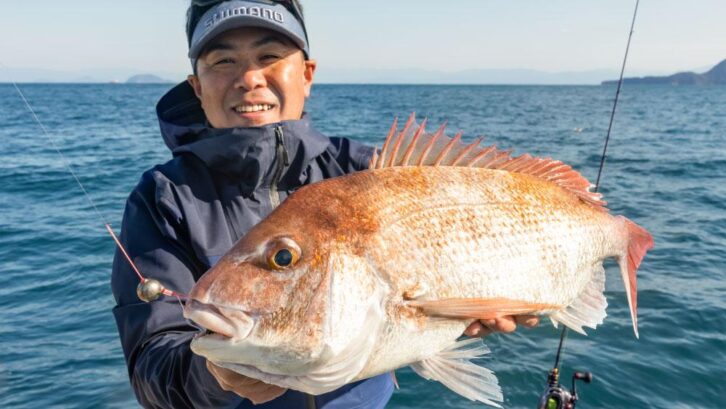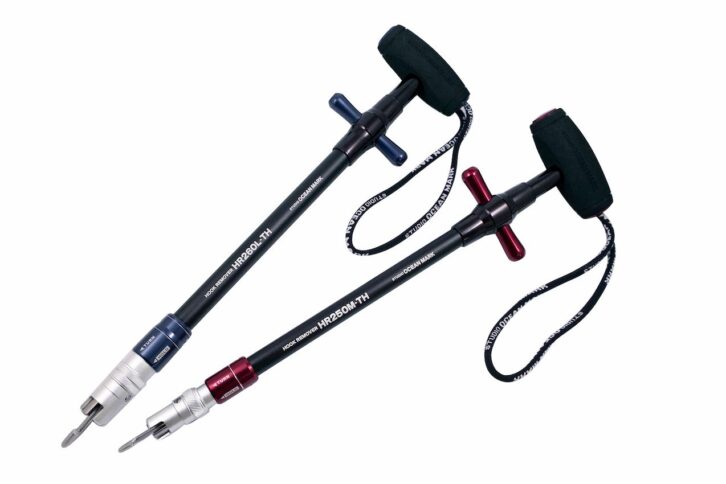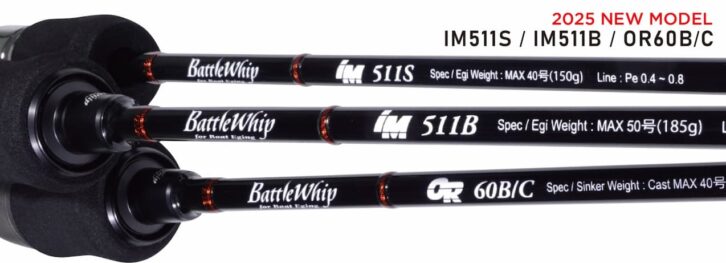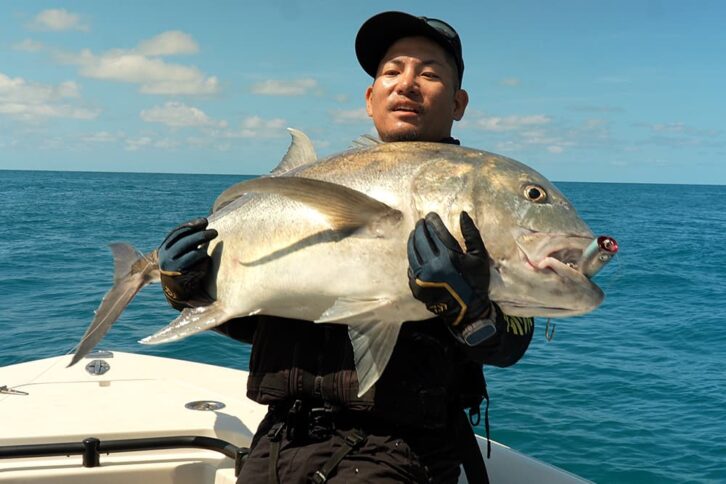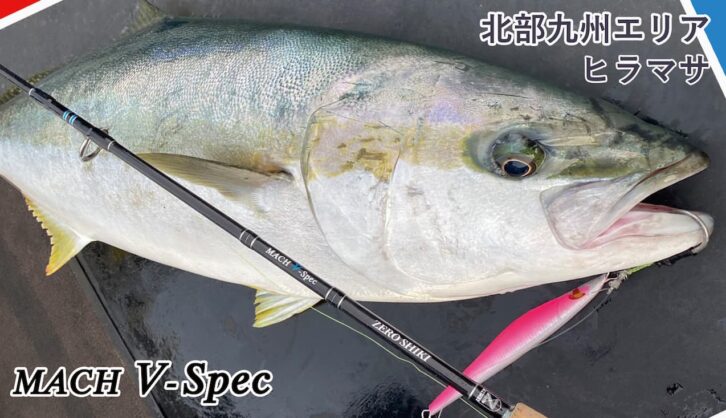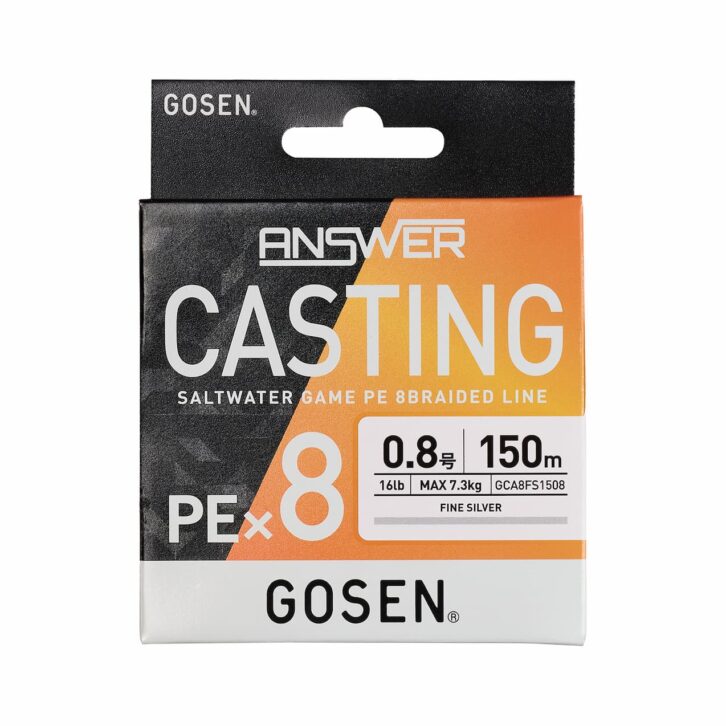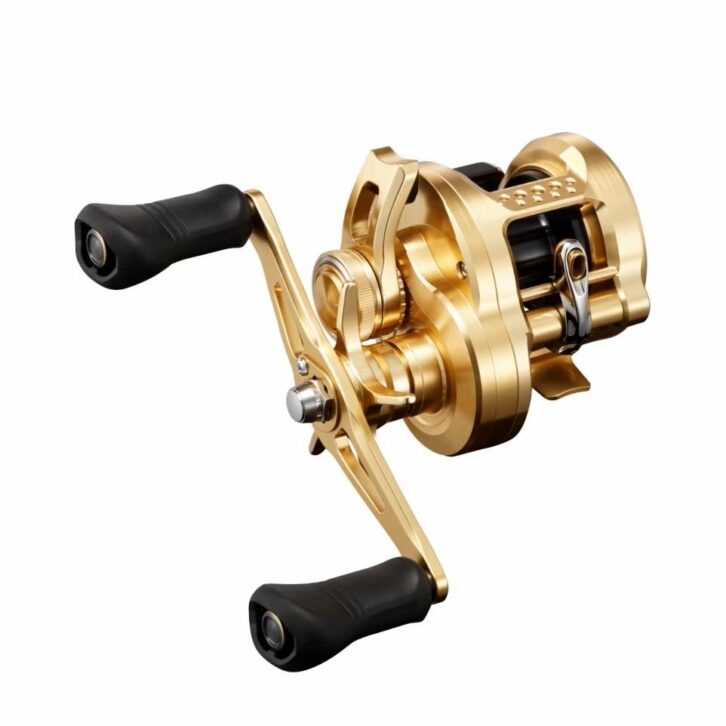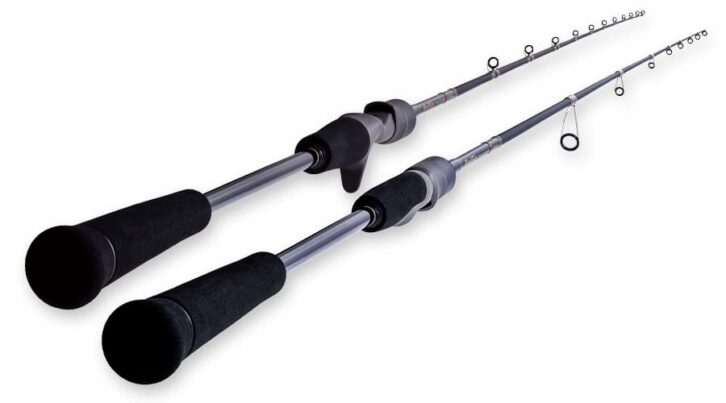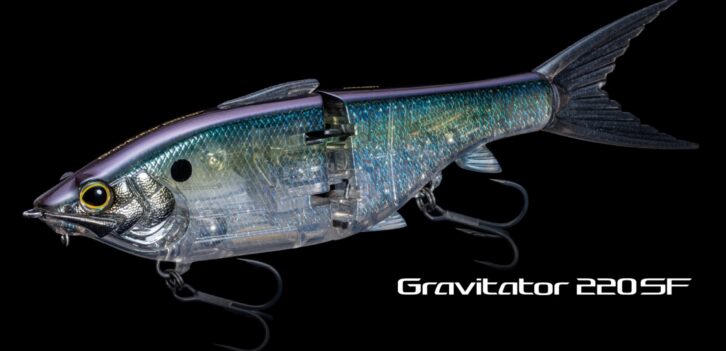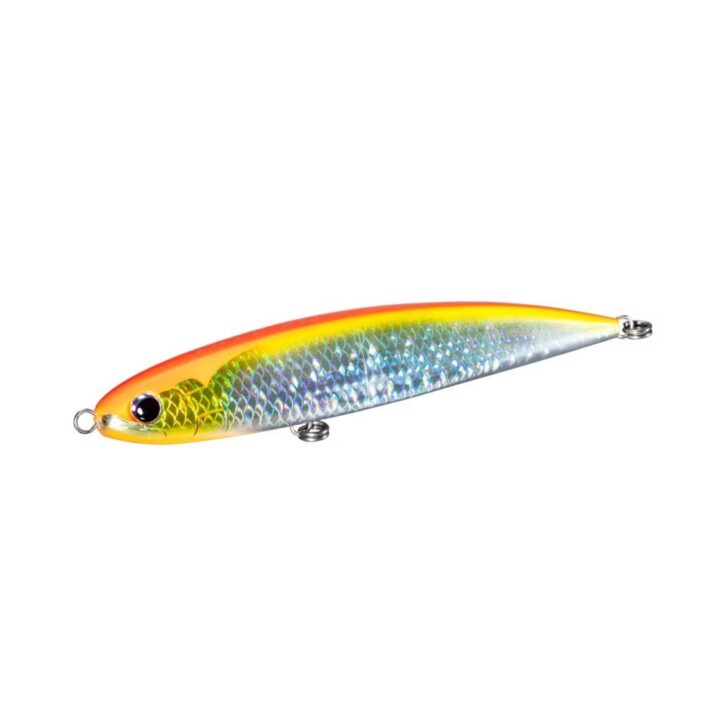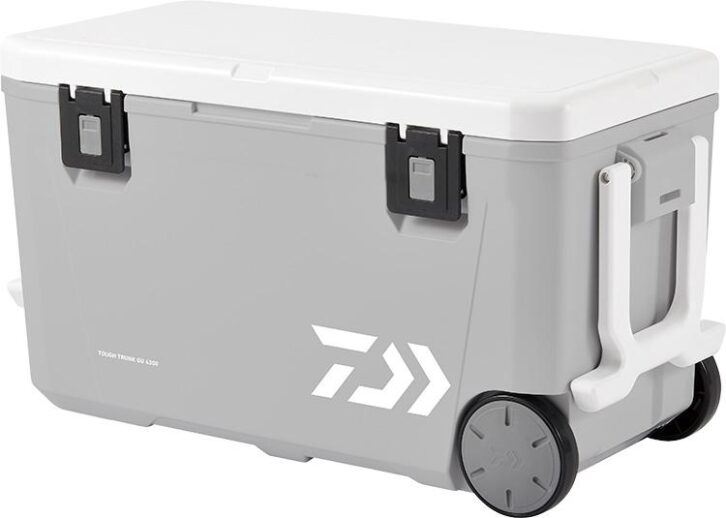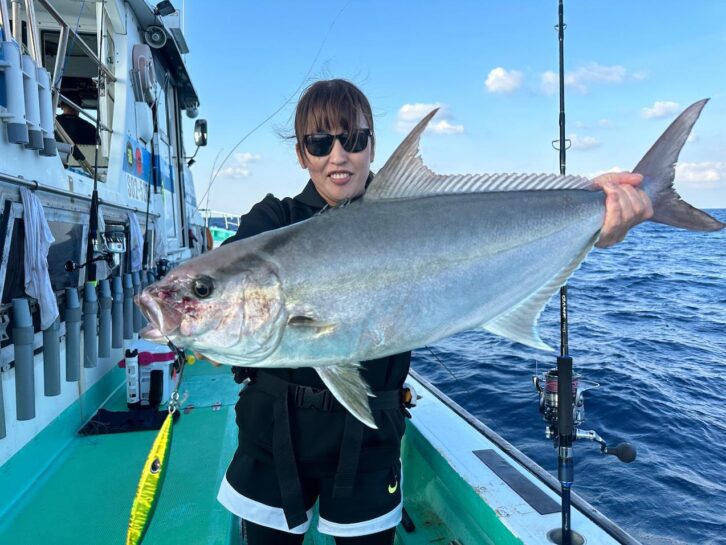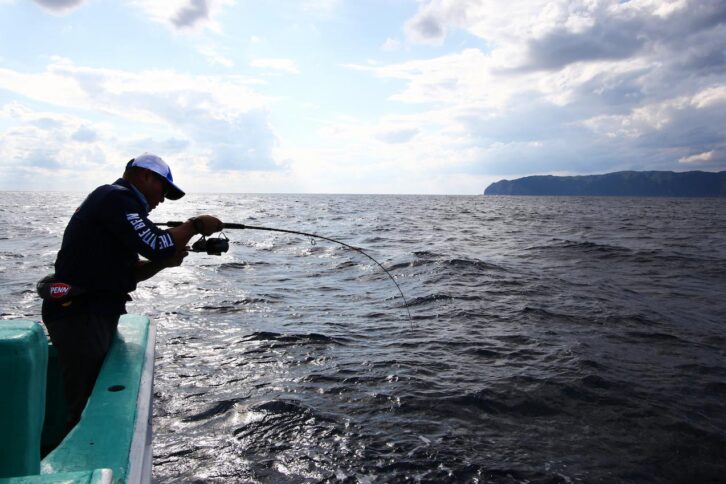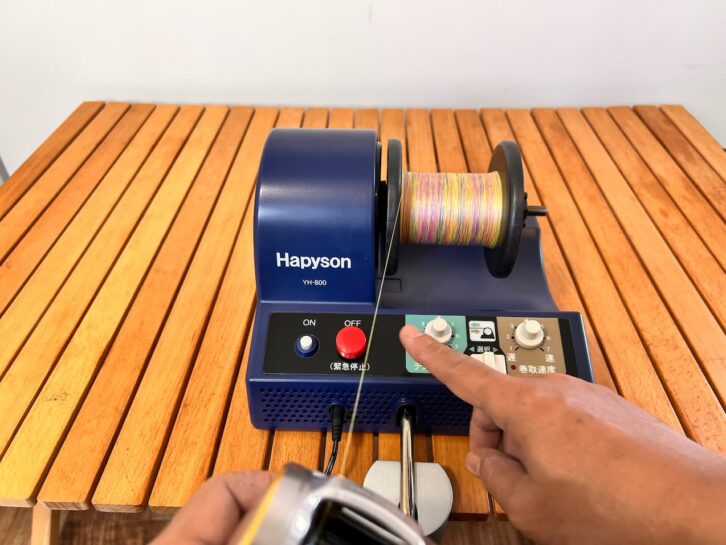Some people think that mid- to deep-sea fishing is difficult, but
but with the right tools, it can be easily enjoyed.
The Blue Safari 35 is used to catch Targeting the super quality red crucian carp in the mid to deep sea Slow Pitch Jerk
The red crucian carp is now known by many as the "nodoguro," a luxury fish. In offshore lure fishing, akamutu has become a popular target for slow pitch jerking in mid- to deep-sea waters, and is targeted throughout Japan. This time, Yasuo Nishimoto, an expert in slow pitch jerking, caught red crucian carp using Studio Ocean Mark's bait reel Blue Safari 35. In addition to the actual fishing conditions, he also explained the tackle and the method of attack.
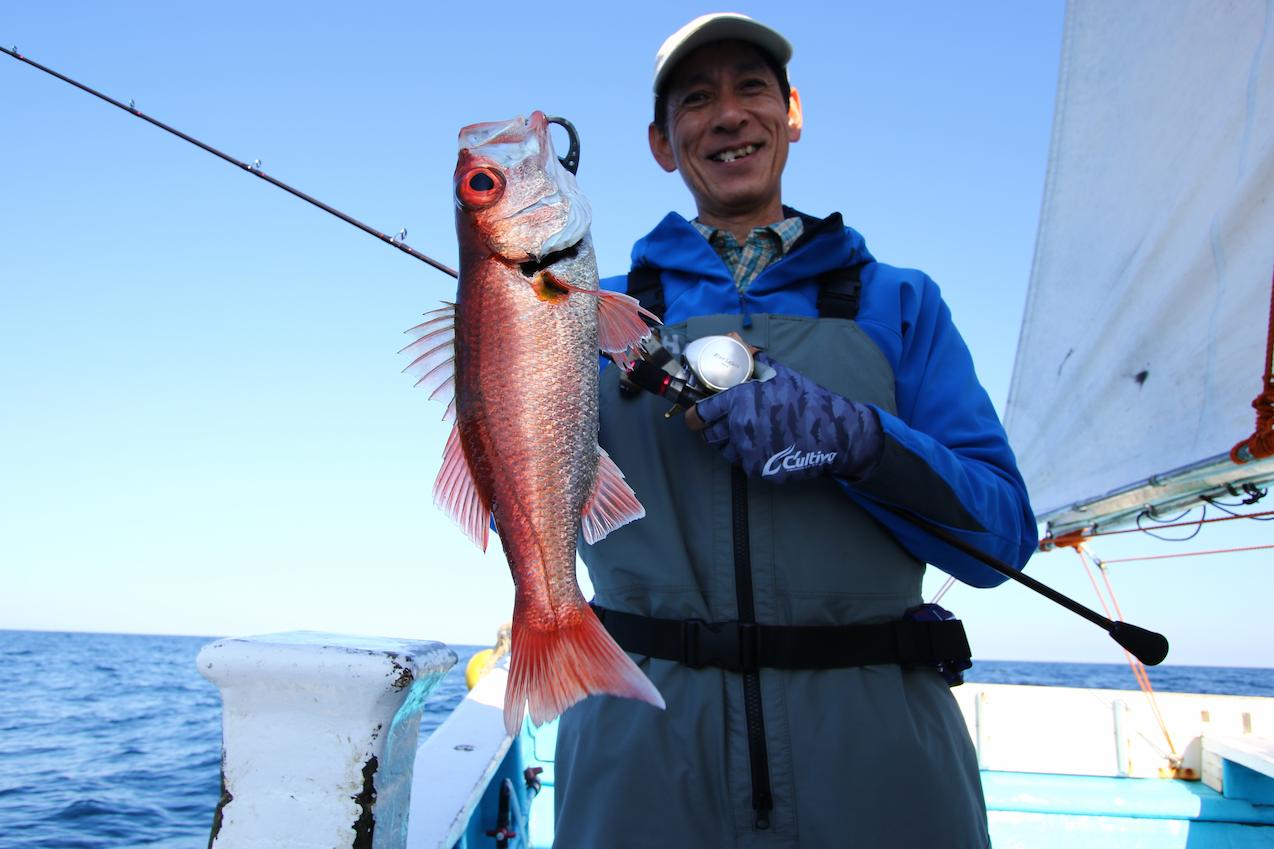
INDEX
Red crucian carp is a target that brings great joy when caught
Known as “nodoguro” in the Sea of Japan, akamutsu is known as a luxury fish among gourmets throughout the country. Recently, it has become an established fishing target, as it has been discovered that it can be caught and fished outside the Sea of Japan as well. At the same time, the spread of slow-pitch jerk fishing, and the development and research of slow-pitch jerking experts have made this fish a new jigging target. I had the opportunity to accompany Yasuo Nishimoto on his fishing trip for this interview, and he is one of the members who, together with his friends, challenged the idea of targeting akamutu with jigs when they had no experience with bait fishing, and found it to be a probable target. He is one of the members who tried jigging for red crucian carp with his friends when they did not have any experience in bait fishing yet.
Targeting red crucian carp with such jigs falls into the category of mid- to deep-sea jigging. If you have never fished in deep sea before, you may have an image of “it looks so deep and difficult! However, the depth to be targeted is 200 meters. However, most target depths are up to about 200 meters, and jigs up to 250 grams can be used, making it a relatively easy target. Although there is a peak season in each field, it can be said that it is a familiar target because it can be targeted during the whole year.
The first attraction of jigging for red crucian carp is its good eating quality. But that is not all. Red crucian carp are not the kind of fish that easily hit one after another, but are caught by technical fishing near the bottom. That is why the value of one red crucian carp is so great and the joy of catching one is so great. A good-sized fish attracts a lot of attention on the boat. That is why even the experts get hooked on fishing. To have a good result in this fishing, it is very important to lure the fish in deep water and to select tackle that can catch the bite of red crucian carp.

The red crucian carp is not a big fish by any means, but the joy of catching it is great. The red crucian carp is so attractive that anglers are willing to go on fishing expeditions in search of the fish. In recent years, many new areas have been opened up, and red crucian carp can be caught in a variety of locations.
Reel Blue Safari 35 recommended for targeting red drum
We covered such red crucian carp jigging, this time from a boat sailing out of Hiraigata in northern Ibaraki Prefecture. Mr. Nishimoto taught us various aspects of jigging for red crucian carp and explained the Blue Safari 35, a small reel by Studio Ocean Mark, which is ideal for targeting red crucian carp.
First, let’s talk about the Blue Safari 35.
This reel is a small model with a level winder. Many people may imagine that a reel without a level winder would be used for mid- to deep-sea jigging, but the Blue Safari 35 has the performance to handle mid- to deep-sea jigging for red crucian carp.
The Blue Safari 35 is easy to use for jigs weighing up to 250 grams. For jigs heavier than that, I choose the Blue Heaven 30. The average weight of jigs used off Hirakata this time was 200-250g. The Blue Safari 35 is easy to handle and has the rigidity and reeling power to smoothly reel in heavy jigs such as 250g, making it the perfect choice.
One of the reasons for its “good operability” is that it is equipped with a level winder. Reels without a level winder require the angler to manipulate the line with his fingers in order to wind the line evenly onto the spool during reeling. With a reel equipped with a level winder, this operation is no longer necessary, making it easy for beginners to handle and allowing them to concentrate on the fight without having to worry about winding the line after a hit. Incidentally, Nishimoto selected Berkley’s Super Fire Line No. 1.2 as his main line for this fishing trip. The standard spool of Blue Safari has a 600 m spool capacity, which means that 1.2 line can spool about 500 m. This means that the line capacity is sufficient. This means that the line capacity is sufficient.
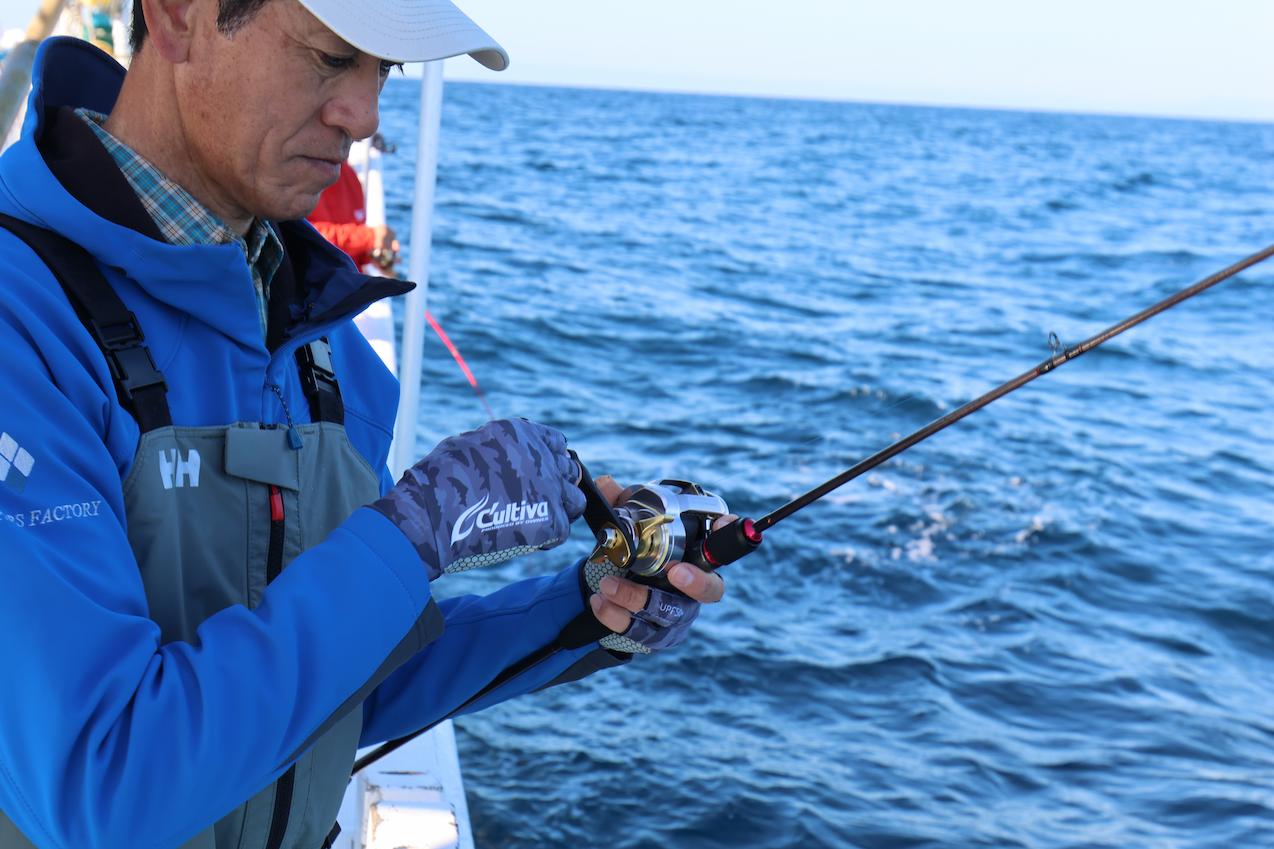
Despite its small body, the Blue Safari 35 has sufficient line capacity for use in mid- to deep-sea fishing, and the rigidity of its body and gears allow it to handle heavy jigs weighing up to 250 g without any difficulty in terms of reeling up power.
Unique drag system is best for red mullet
The Blue Safari 35 is also equipped with a feature not found in other reels, and this is also a part that leads to good operability. This is the new “wing drag” system. Normally, bait reels equipped with a level winder have a star drag. Star drag is good because it is easy to set, but when raising or lowering the drag during a fight, it is difficult to see how much the drag has changed. On the other hand, reels with lever drag have the advantage that the drag value can be increased with a single click of the lever, but the initial drag setting must be set by repeatedly adjusting the drag at the free lever position and measuring it at the fighting position. The drag setting is a bit time-consuming.
Both star drag and lever drag have their advantages, and the Blue Safari 35 can be said to be a reel with both. The Blue Safari 35 is equipped with a dial-type drag preset knob similar to that of the star drag, and the main drag value is set there. Furthermore, by moving the wing drag, it is possible to raise or lower the drag in 400-500g increments with a single click. Depending on where the drag is set on the wing drag, it is possible to raise or lower the drag in 400-500g increments during a fight. The wing drag lever has four levels. If you are fishing with drag raised during a fight, set the drag value at the very front and raise it. If the fishing is to lower the drag, the drag is measured with the wing drag at the far end, and then lowered depending on the conditions during the fight. The drag value is measured at the center of the winged drag and can be raised or lowered depending on the situation.
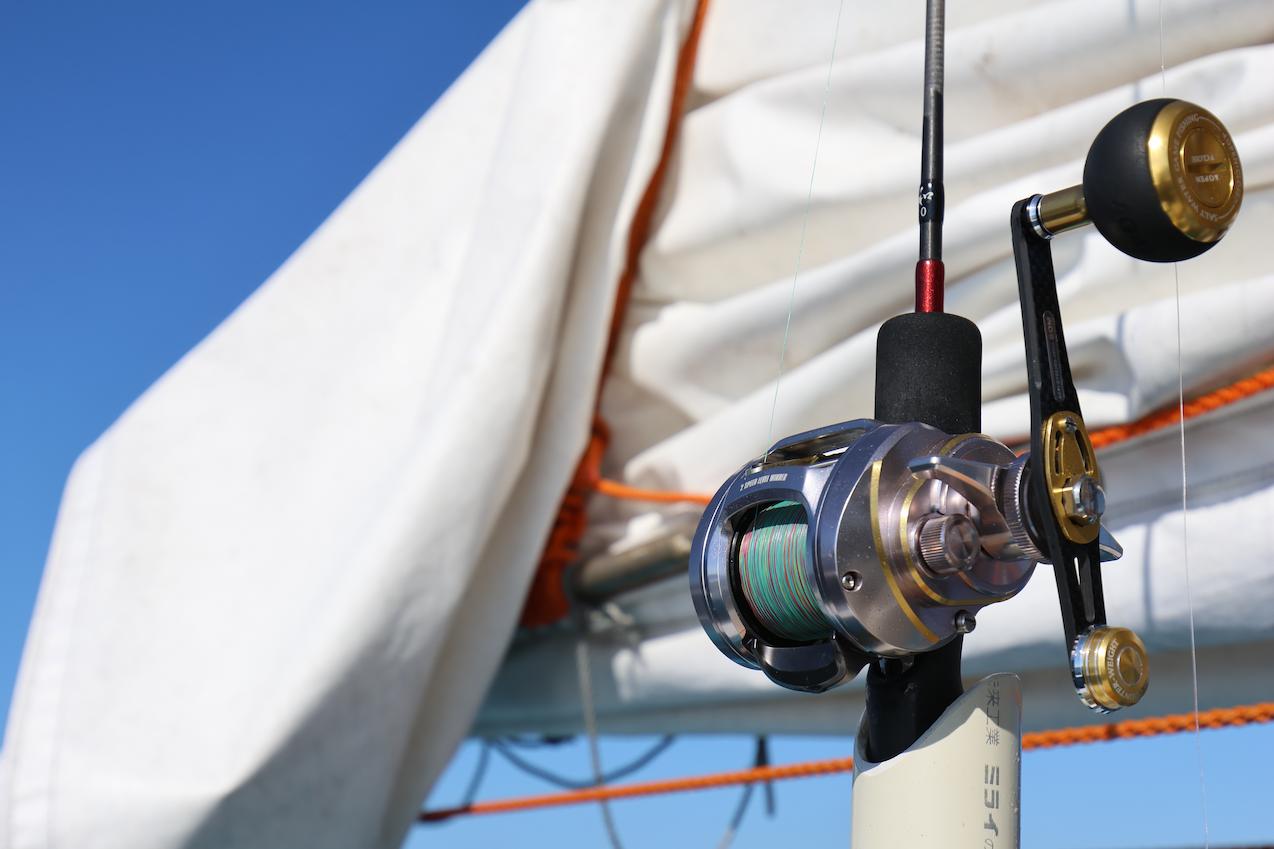
The dial at the base of the handle is the preset knob. The lever inside it is the wing drag. Set the wing drag to the desired position first, then adjust the preset knob to set the initial drag value. One click of the winged drag lever can hold 400 to 500 g. The drag force is increased by moving the lever toward the back, and decreased by moving it toward the front. The reel shown in the photo is equipped with a custom AG41 handle, which makes it easier to grasp a bite and to wind up the reel.
Incidentally, Mr. Nishimoto, when jigging for red crucian carp”I want to prevent red crucian carp from breaking their mouths during the fight, so I set the drag at the deepest setting of 1.5 kg. Once we get a hit, I lower the drag value.”
With a weak drag value from the start, when the resistance is high, such as when the boat is moving up and down due to waves or in fast tide conditions, the line will come out just by shucking the jig. When you are fishing for bluefish, you should set the drag to 1.5 kg and use a gentle drag after a hit. When targeting bluefish, he sets the drag at the center position of the winged drag and raises or lowers it according to the pull of the fish during the fight. This drag mechanism is designed to increase the catch rate of fish after they hit the water.

Red mullet are prone to mouth slips. After a hit, the red crucian carp will often go wild while being reeled in, and the fish is often caught due to the fish’s mouth breaking. Also, on days when waves are high, red mullet can be pulled up and down by the boat, causing them to lose their mouths. For this reason, Mr. Nishimoto loosens the drag considerably after a hit. The Blue Safari 35 makes this kind of drag manipulation easy and reliable.
More detailed information on the Blue Safari 35’s performance and tackle other than the reel is available at the following address.
https://anglers-time.com/en/3070/
The basics of jig manipulation. Keeping it on the Bottom
Well, this time we took on the Hiragata red crucian carp using the Blue Safari 35. We boarded the Eisho Maru, which would be taking care of us this time, and departed from Hirakata, arriving at the point a little earlier than usual because of the calm seas. The captain signaled the start of the fishing at a depth of 140 meters.
Mr. Nishimoto explained that jigging for red crucian carp is best in the range of 1.5m from the bottom. The key to getting a hit is to keep the jig close to the bottom and keep luring the fish. After the jig reaches the bottom, carefully manipulate the jig. The jig is moved by turning the reel handle 1/4, 1/3, or 1/2 turn. When I am able to catch fish, they often take a bite while I am three times shaking the reel from the bottom,” he said. The basic method is to keep the jig near the bottom in the 1.5-meter range, but during dark hours or when the tide is muddy, the fish may float a little higher, so I sometimes probe a little higher.
When I say a little higher, I mean about 3 to 4 meters. Incidentally, during his search, Nishimoto reels the jig up to about 10 meters and drops it back down again. By reeling the jig in, he shifts the position of the jig and makes a long fall to make the red crucian carp recognize the jig.

Action is chopped from the bottom with 1/4, 1/3, or 1/2 reel handle. Hits often occur in the 1.5 m range from the bottom.
Incidentally, the way to move the jig depends on the activity of the red crucian carp at that particular time and day, but the basic idea is not to move the jig too loudly, but to shimmy it up. Sometimes I don’t move the jig and let the red crucian carp see it slowly.
The flat is in the recovery period after the spawning season, so I think the bite is shallow. At that time, they don’t seem to be biting big baits, so it’s best not to move the jig too much. With this in mind, he began his exploration by selecting a Power Gear.
This time, Mr. Nishimoto brought in the Blue Safari 35 in power gear and high gear, and used them differently. The Power Gear has a maximum line winding capacity of 70 cm per rotation of the handle, while the High Gear has a maximum winding capacity of 90 cm.
He said, “Basically, I use the high gear. The high gear is easier to handle the ups and downs of waves while luring fish, and it is also easier to reel in the line in accordance with the waves when reeling in the line after a fish is hooked. Also, when the water is deep, retrieving the jig is faster. However, when it is calm, as it is today, I sometimes use power gear to entice the fish to stay on the hook.

Always concentrate on the movement of the jig, and keep the action without moving it far from the bottom. At times, he will also use enticing techniques to make the jig look slow and deliberate without moving it.
Highly active at deep points!
At the 140-meter point in the morning, an angler on the miyoshi got a bite about 30 minutes after the start of the fishing. The fish that came up was a good size, 1 kg class. Seeing the success, Mr. Nishimoto and the others on the boat moved the jig more carefully, keeping it on the bottom. The red crucian carp is a rather curious fish. Moreover, they are not single fish, but in schools to some extent. Although they are not as big a school as bluefish, some of them can be caught in a row.
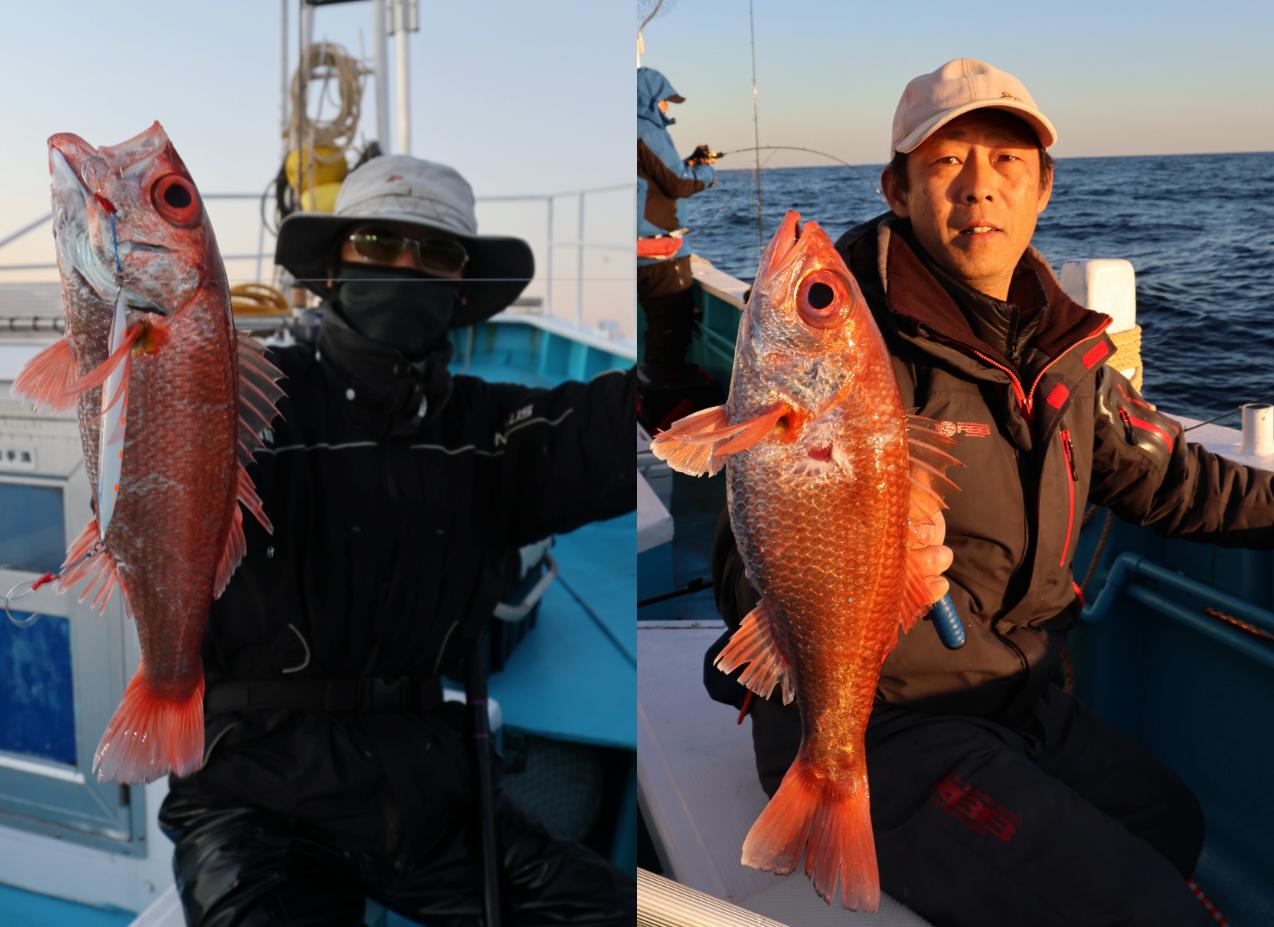
In the morning, they hit anglers near the meyoji. Both were good size.
We then moved to 160m. Here, too, an angler on the same boat got a bite. Seeing this, Mr. Nishimoto moved to various ways of moving the jig, stopping, and changing jigs. He tried different types of jigs, including moving ones, ones with small movements, and ones with small silhouettes. The captain decided to move to a 200-meter area further away from the harbor. The captain said, “I don’t often go into this deep area at this time of the year,” but the lack of consecutive bites made him decide to give it a shot.
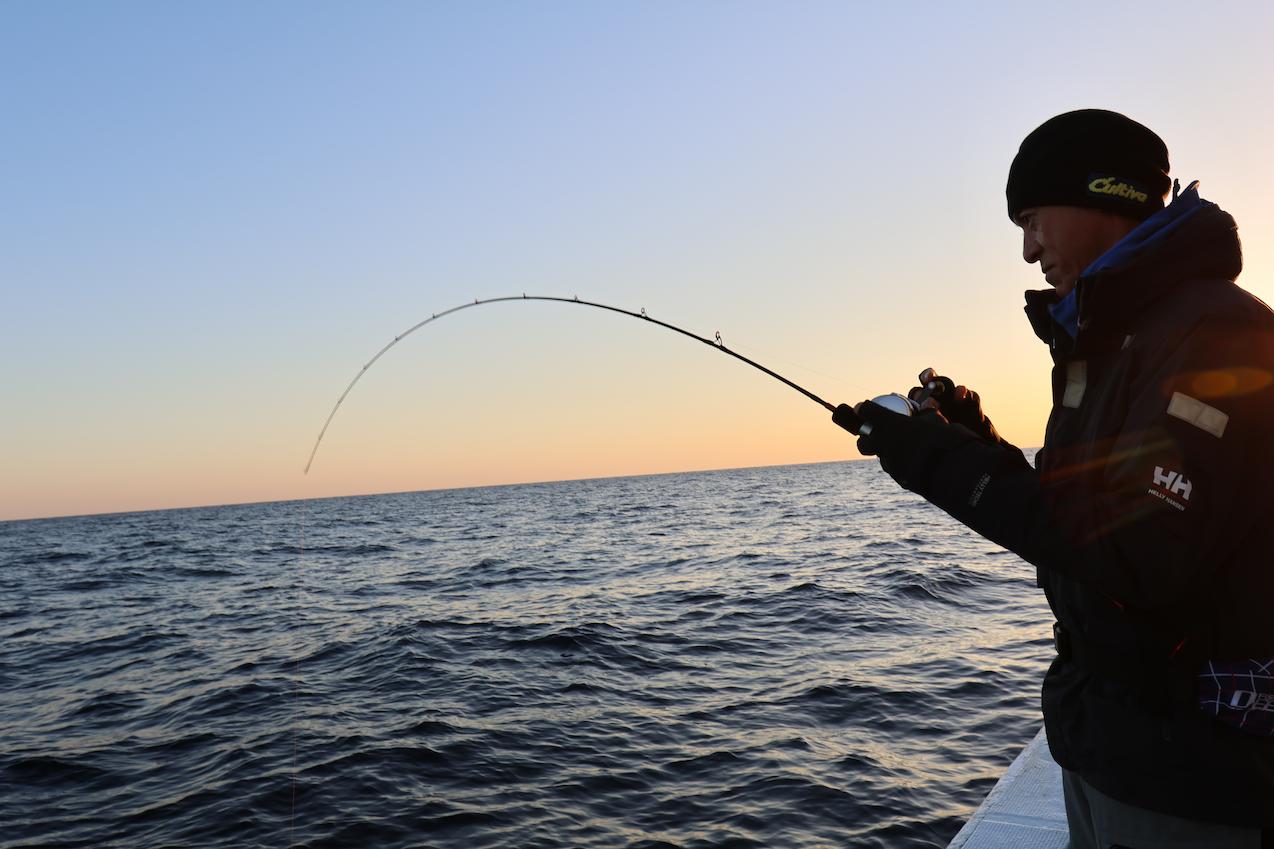
On the day, we started at 140m. Then moved to 160m. Always concentrating on the fishing. By the way, jigs with luminescent colors are effective for red crucian carp. The reason is that it is a deep area and it makes the fish stand out more.
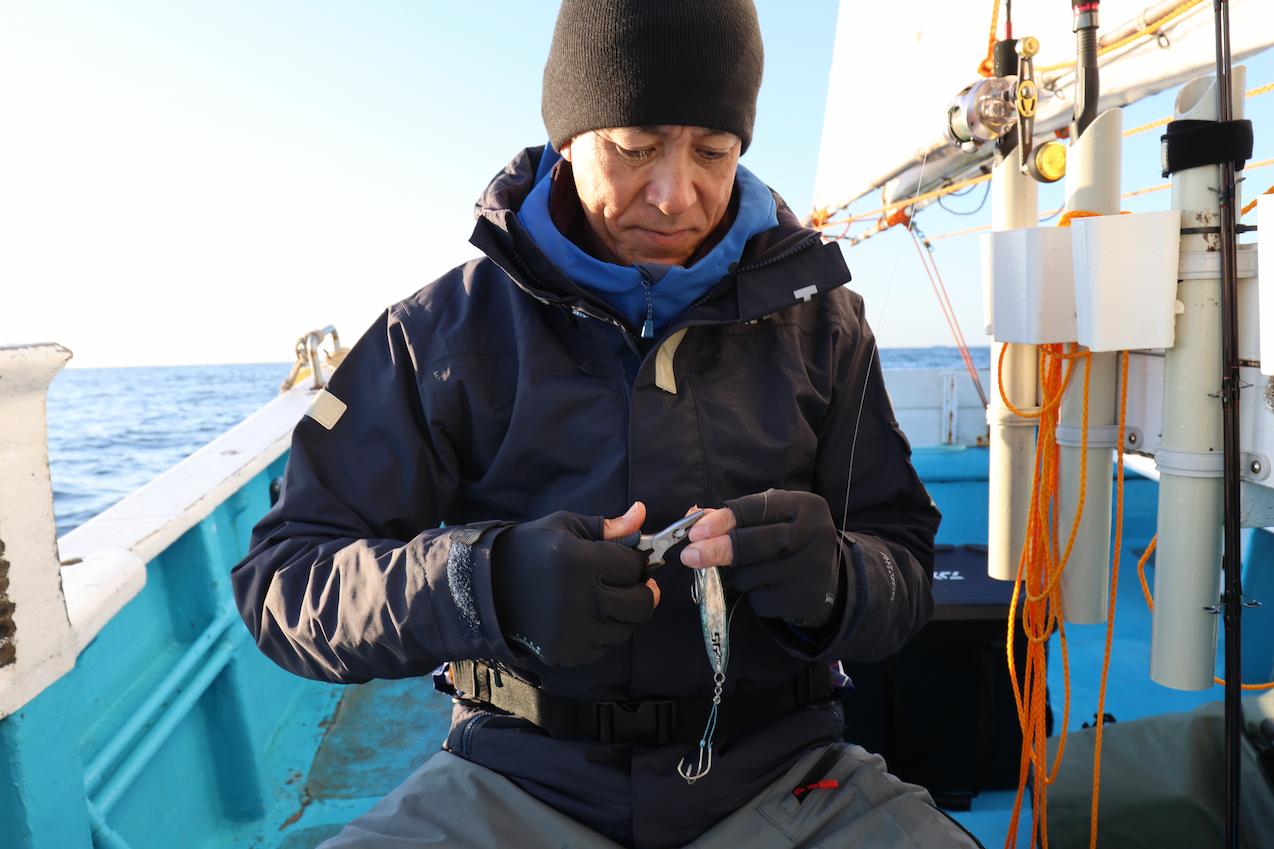
Mr. Nishimoto changes jig types and hooks, searching for a pattern that will produce a hit. Thinking this way and that, he connects with a hit. This is the interesting part of jigging for red crucian carp.
In the 200-meter area, Nishimoto-san connected with a hit. He immediately adjusted the Blue Safari 35’s wing drag, lowered the drag, kept the rod in position, and carefully reeled in the fish at a constant speed. On the way to the reel, the red crucian carp showed a small, lively tug. If the drag is tightened during this pull, the fish often breaks off in the mouth and falls apart. It is important to reel in the red crucian carp gently without losing concentration until landing.
I had several bites with the spy five, and finally got on it. I had a bite and didn’t get on it, but I reeled it in and let it fall, and when I stopped for a bit after enticing it, I got a hit.
Nishimoto, who had caught many red crucian carp in the past, looked happy to have successfully landed a fish. He is very happy when he maneuvered the jig skillfully and caught the fish just as he intended.
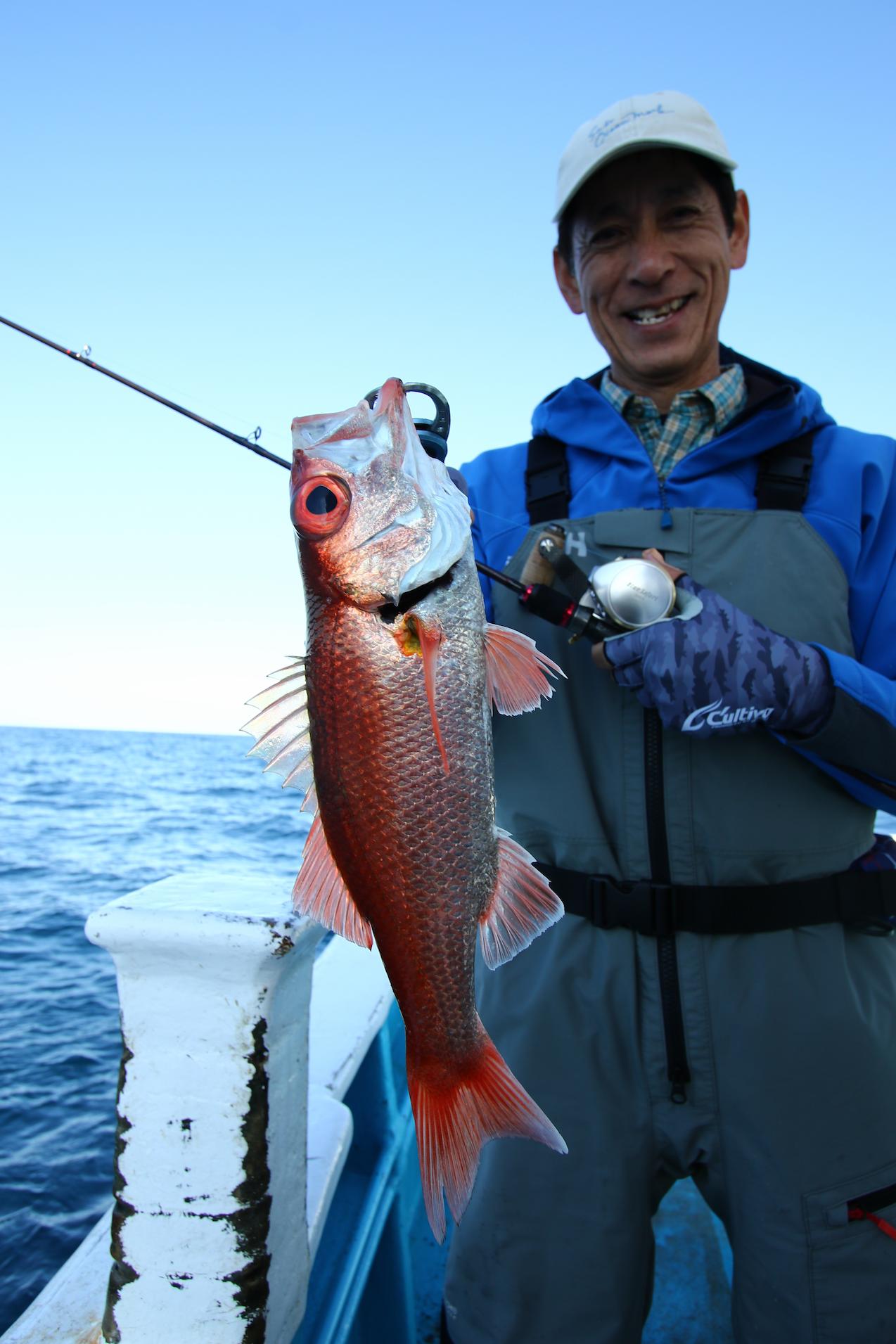
Even Nishimoto, who has caught red mullet many times, is happy when he catches a red mullet. It makes him smile.
I asked him how he catches the bite of red crucian carp.
Basically, the bite occurs when the reel is reeled up, the tip comes in, the tip comes back, and the jig moves with a ‘ping’. Due to the dandruff of the line, you may feel the bite during the fall after the tip returns, but at that time, the fish has already eaten.
The basic pattern of jigging for red crucian carp is to hook the fish by reeling in the jig without giving a big hooking motion. Anyway, it is important to always concentrate on the movement of the jig and catch the changes in its movement. To achieve this, it is necessary to select a rod, reel, and line with high sensitivity.
On this day, a series of fish were caught in this 200-meter area. By the end of the day, Mr. Nishimoto had caught three more. Good size fish were also mixed in. The other anglers on the boat who seemed to be experienced in jigging for red crucian carp skillfully manipulated the jigs in various ways and added to their catch. Jigging for red crucian carp is not a showy sport, but the smiles on everyone’s faces when they caught a fish was impressive. Although it is a small fish for an offshore fishing target, it has a good taste and is very enjoyable to catch because of its game-like qualities. Anglers and captains have been developing areas all over the country where anglers can enjoy fishing in familiar waters, so if you have never tried it before, please give it a try. If you have never tried jigging for red crucian carp before, I recommend that you take the Blue Safari 35, which is ideal for jigging for red crucian carp, and other tackle, and be fully prepared to have a great time.
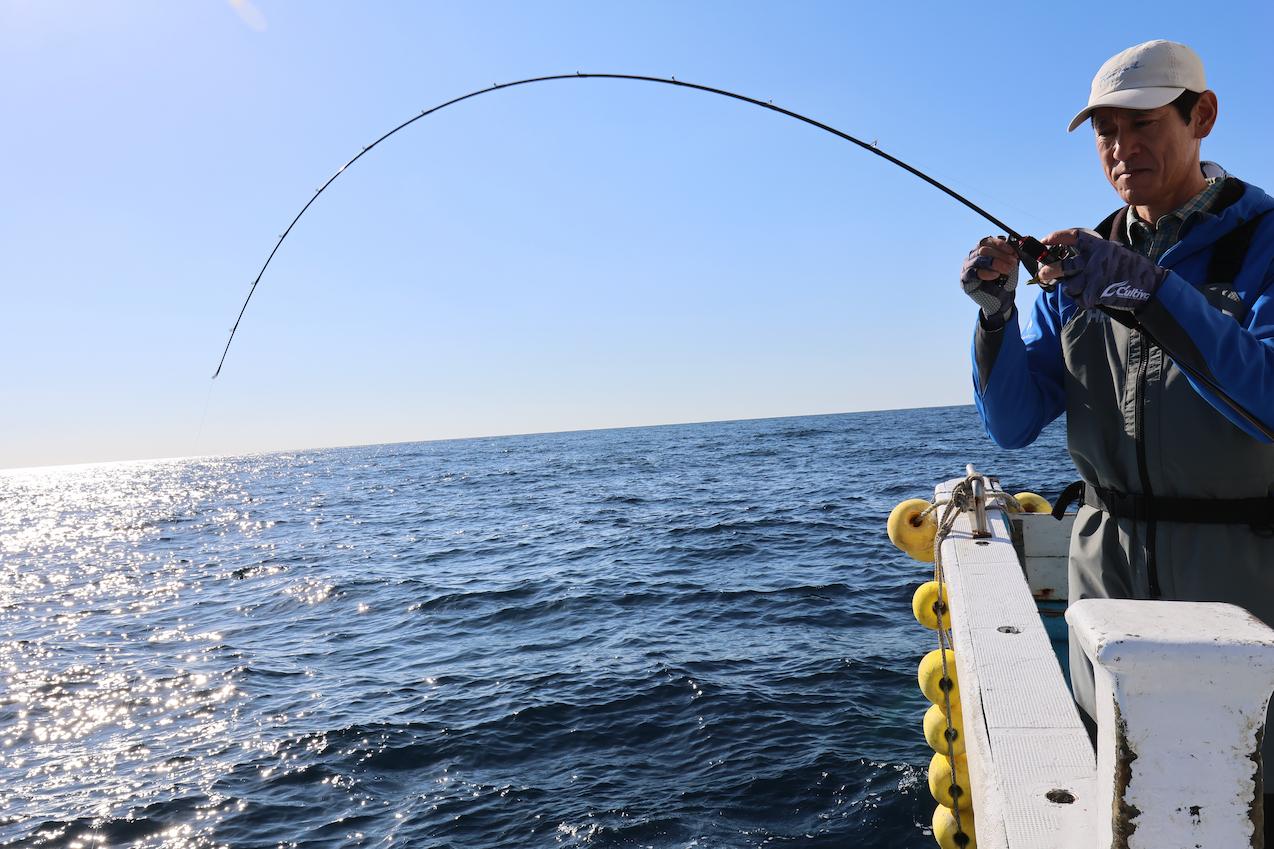
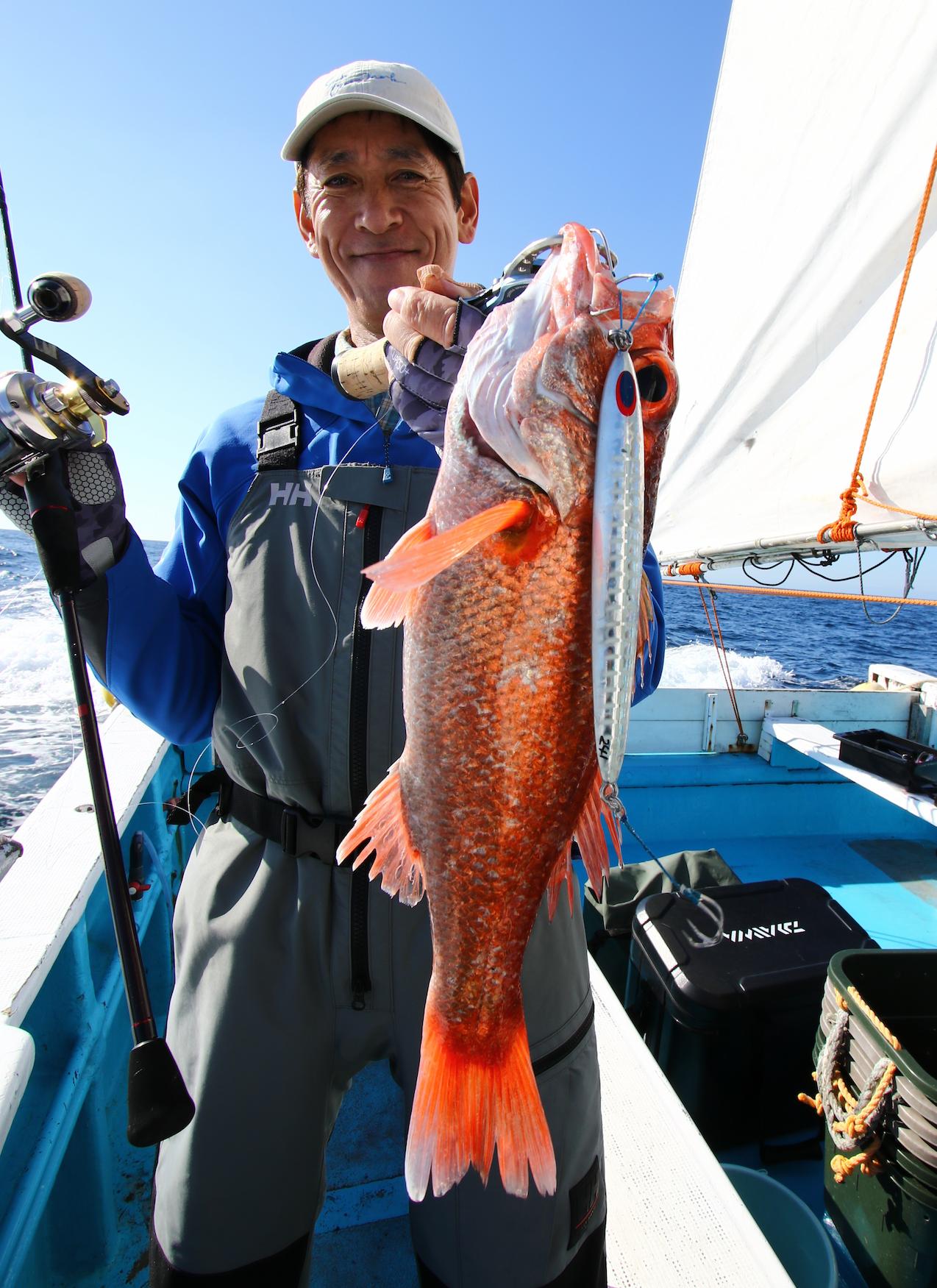
Mr. Nishimoto caught four red crucian carp that day. He also caught a good-sized fish and was satisfied with his catch.
More detailed information on the Blue Safari 35’s performance and tackle other than the reel is available at the following address.
https://anglers-time.com/en/3070/
Fishing boat: Eisho Maru (Hirakata Port, Kitaibaraki)
http://www.houemaru.com/
